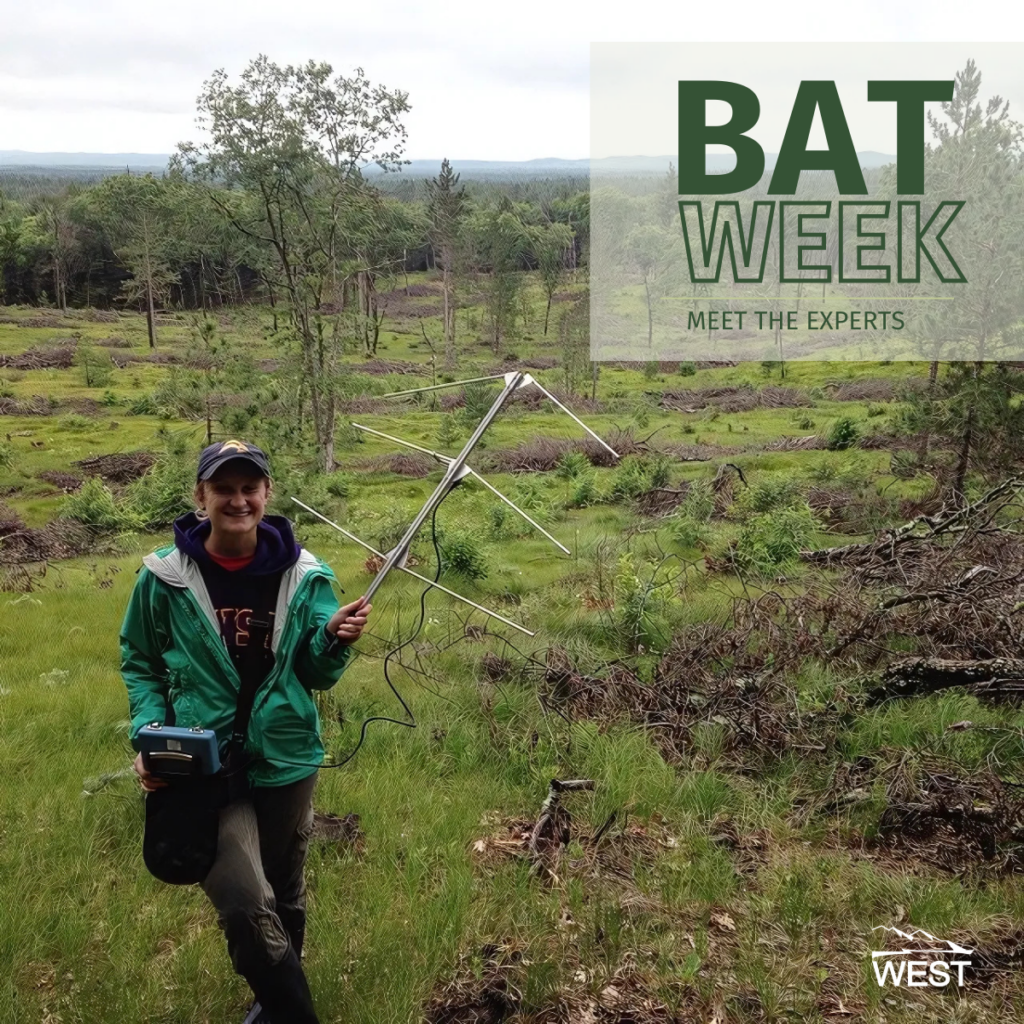
1) What got you into bats or brought you to WEST?
I studied abroad in college when I was 19 and worked on an invasive mongoose project. The professor leading that project was a bat biologist. I was badly bitten by one of the mongoose harem males (which apparently impressed her) and she invited me to join her as a wildlife intern working with bats. I accepted and never looked back and have worked with bats every year since then! So, getting bit by a mongoose was what got me into bats, ha!
One of my committee members in grad school had previously worked with Jennifer Stucker at the US Geological Survey, and two weeks before I defended my thesis, she told me Jennifer wanted to invite me for an interview in Minnesota. I accepted the position the same week I defended and was in the field on my first WEST project two weeks later! So, Jennifer is ultimately the reason I’m at WEST 🙂
2) What do you love most about your job?
I love how WEST has allowed me to evolve as a biologist and as a professional, I love that my work challenges and excites me, and most of all I love the people I work with.
3) What is your favorite bat fact?
My favorite bat fact is that there is a species in Costa Rica (brown long-tongued bats; Glossophaga commissarisi) that has a very unique relationship with the sea bean (Mucuna holtonii). This sea bean species relies exclusively on bats for pollination, specifically avoiding bees and hummingbirds by waiting until nighttime to open its flowers. It possesses a singular specialized reflective petal that can only be detected via echolocation! When a bat is attracted and inserts its tongue into the perfectly sized “keyhole” within the flower, it triggers spring-loaded anthers to literally fire pollen into the bats face.
